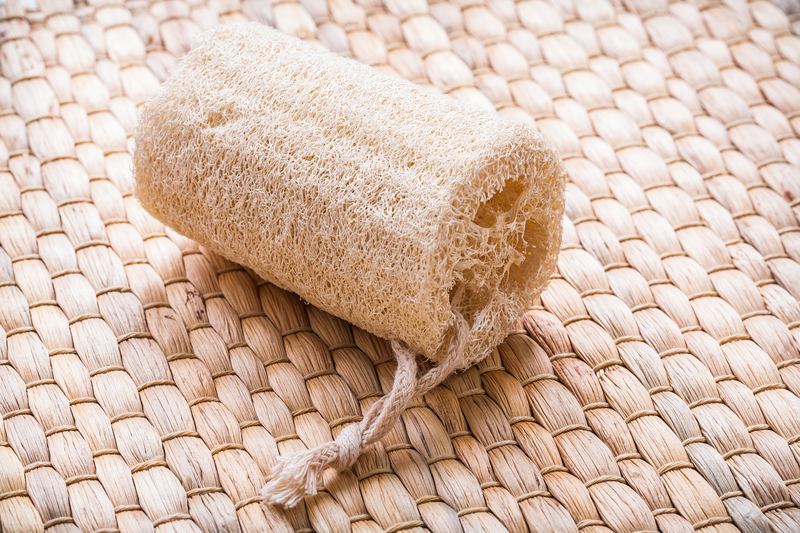Quick and Easy Ways to Clean Mould on Window Sills
Posted on 29/08/2025
Quick and Easy Ways to Clean Mould on Window Sills
Mould on window sills is a common yet frustrating problem for homeowners. Not only does it look unsightly, but it can also pose health risks and damage your property if left untreated. Learning how to clean mould from window sills quickly and effectively ensures a healthier living environment and helps preserve your home's value. In this comprehensive guide, you'll discover easy methods for removing mould, essential prevention tips, and the reasons why mould appears in the first place.
Understanding Mould Growth on Window Sills
Before jumping into the quick ways to clean mould off window sills, it's important to know why mould forms and how it can affect your health.
What Causes Mould on Window Sills?
- Condensation: Moisture from condensation is the most common culprit. Cold window surfaces attract warm, moist indoor air, causing water droplets to collect on sills and frames.
- Poor Ventilation: Areas with limited airflow see more moisture build-up and, in turn, mould growth.
- Leaky Windows: Cracks or gaps can let rainwater seep in, increasing humidity and encouraging mould spores to flourish.
Mould thrives in damp, dark, and warm environments--making window sills, especially those in bathrooms and kitchens, a prime location.
Health Risks Associated with Mould
Exposure to mould can lead to various health issues, especially for sensitive individuals. Common symptoms include:
- Nasal congestion and sinus irritation
- Itchy eyes or skin
- Coughing and respiratory problems
- Allergic reactions or asthma attacks

Preparation: What You'll Need for Mould Removal
Before starting your quick cleaning of window sill mould, gather the necessary supplies. It's essential to protect yourself and prevent the spread of spores.
- Protective gloves and a mask
- Old towels or absorbent cloths
- Spray bottle
- Soft-bristled brush or old toothbrush
- Warm water
- Cleaning solutions: White vinegar, baking soda, hydrogen peroxide, or a commercial mould remover
- Paper towels or disposable cleaning wipes
- Garbage bag for disposal
How to Clean Mould on Window Sills Quickly and Effectively
Step 1: Ensure Safety and Ventilation
Always wear protective gloves, a mask, and open nearby windows for ventilation. This protects you from inhaling mould spores and harsh cleaning fumes.
Step 2: Dry Out the Area
- Use an absorbent towel to remove any excess moisture first.
- If the area is very damp, set up a fan directed at the window sill for a few minutes.
A dry surface makes it easier for cleaning solutions to work and prevents mould from spreading during the process.
Step 3: Choose Your Cleaning Solution
There are various quick cleaning solutions for window mould you can use, depending on materials available and your preferences. Here's a breakdown of the best household options:
- White Vinegar: Naturally acidic and kills up to 82% of mould species. Pour undiluted vinegar into a spray bottle for best results.
- Baking Soda: Effective at scrubbing and deodorizing. Mix with water to create a paste.
- Hydrogen Peroxide (3%): A powerful antifungal and antibacterial solution.
- Commercial Mould Remover: Specialized cleaning products available at most hardware stores.
Step 4: Apply the Cleaning Solution
- Generously spray the affected area with your chosen solution.
- Let it sit for 10-15 minutes to break down the mould structure.
Step 5: Scrub the Mould Away
Using a soft-bristled brush or an old toothbrush, gently remove mould from the window sill and frame. Be thorough yet gentle, especially if your window frames are wooden to avoid damage.
Step 6: Wipe and Rinse
- Use a damp cloth or disposable wipes to remove loosened mould residue and cleaning agents.
- Rinse the area with clean water and wipe dry with a paper towel.
- Dispose of used wipes and gloves immediately in a sealed garbage bag to prevent further spore spread.
Step 7: Dry Thoroughly
Finish by thoroughly drying the sill and surrounding area. For stubborn dampness, a hairdryer set on cool or a portable fan can help speed up the process.
Home Cleaning Solutions for Window Sill Mould
1. White Vinegar Solution
- Pour undiluted white vinegar into a spray bottle.
- Spray directly onto the mouldy areas.
- Leave for at least one hour.
- Scrub, rinse, and dry as previously described.
Vinegar is a powerful, non-toxic alternative to chemical cleaners and helps deodorize musty smells.
2. Baking Soda Paste
- Mix a few spoonfuls of baking soda with water to form a thick paste.
- Apply directly onto mould spots.
- Let the paste sit for 10-15 minutes, then scrub.
Baking soda is safe for children and pets, making it ideal for family homes.
3. Hydrogen Peroxide Spray
- Pour 3% hydrogen peroxide onto the mould or into a spray bottle.
- Allow to sit for about 10 minutes before scrubbing and wiping clean.
Hydrogen peroxide is excellent for breaking down tougher black mould colonies but may lighten paint or finishes, so test first.
4. Tea Tree Oil Solution
- Mix one teaspoon tea tree oil with one cup of water in a spray bottle.
- Spray onto the mould and leave it for an hour before scrubbing and rinsing.
Tea tree oil is a natural fungicide with lasting mould prevention qualities.
Preventing Mould Growth on Window Sills
Once you've finished the quick and easy mould removal on window sills, taking preventive action ensures the mould doesn't come back. Here are the most effective strategies:
Improve Indoor Ventilation
- Open windows regularly, especially after cooking or showering.
- Use bathroom, kitchen, and laundry room exhaust fans.
- Consider using a dehumidifier for rooms prone to excess moisture.
Control Indoor Humidity
- Keep indoor humidity levels between 30-50%.
- Address water leaks, condensation, or plumbing issues promptly.
- Wipe away water droplets on windows and sills every morning during colder months.
Seal and Inspect Windows
- Check window frames for gaps and re-seal as necessary.
- Install double glazing or storm windows to reduce condensation build-up.
- Replace worn out window seals to prevent water ingress.
Regular Cleaning and Maintenance
- Establish a regular window sill cleaning routine, ideally once a month.
- Clean away dust and debris as this provides nutrients for mould spores.
- Use vinegar or a mild detergent every few weeks as a preventive measure.
When to Call a Professional for Mould Removal
While most cases of mould on window sills can be treated with the methods above, there are situations when professional help is required:
- The mould covers a large area (more than 1 square meter).
- Mould keeps returning despite repeated cleaning and preventive efforts.
- There are signs of major water leaks or structural damage.
- You have health concerns, especially respiratory issues, allergies, or immune system weaknesses.
In these situations, a certified mould removal specialist can safely and thoroughly eradicate mould, identify the underlying cause, and recommend long-term solutions.
Tips for Mould Prevention and Ongoing Maintenance
- Keep sills dry: After cleaning, regularly wipe window sills to remove condensation.
- Monitor humidity: Use a home hygrometer to track and control moisture levels.
- Air circulation: Move window coverings or furniture that block air flow to sills.
- Clean window frames and sills: Regular dusting and gentle wiping discourages mould growth.
- Check caulking and seals: Periodically inspect and repair as needed to prevent water intrusion.

Frequently Asked Questions (FAQs) About Cleaning Mould on Window Sills
Is it safe to remove mould yourself?
Yes, for small and non-toxic mould spots, using household cleaning solutions and protective gear is considered safe. However, if you have a severe allergy, asthma, or if the affected area is large, consult a professional.
What kills mould permanently on window sills?
Consistent use of natural solutions like white vinegar and hydrogen peroxide can kill mould roots. However, ongoing prevention is necessary--keep surfaces dry and address moisture problems to prevent regrowth.
Can I use bleach to clean mould off window sills?
Though bleach is often used, it's less effective on porous materials like wood and only removes surface mould without killing spores. Opt for vinegar or professional mould removal for persistent infestations.
Why does mould keep coming back on my window sills?
Persistent window sill mould is usually due to unresolved moisture issues--improve ventilation, fix leaks, and maintain regular cleaning to prevent recurrence.
Conclusion: Enjoy Clean, Healthy Window Sills
Mould on window sills is a preventable and treatable issue. By following the quick and easy ways to clean mould on window sills outlined above, you'll achieve a healthier home environment and protect your property. Remember to tackle the mould as soon as you notice it, use the right cleaning solutions, and make preventative maintenance part of your routine. With these strategies, your window sills will remain sparkling clean and mould-free all year round!
Your windows are the eyes of your home--keep them healthy, clean, and bright!




